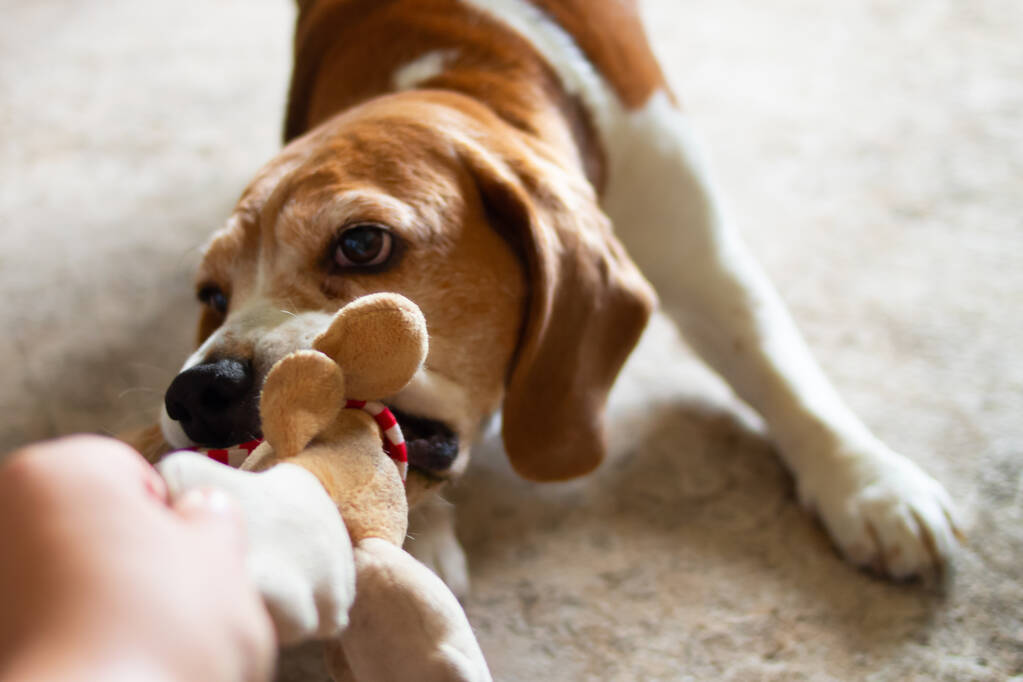6 min read
1027 words
Having a dog that constantly whines can be frustrating for pet owners. Not only is it annoying, but it can also be a sign that your dog is trying to communicate something. In this article, we will discuss various methods and techniques to help you stop your dog from whining.
Understanding Your Dog’s Whine: Why Do They Do It?
Before you can effectively stop a dog from whining, it’s crucial to understand why they are doing it. Whining is a form of vocal communication for dogs, and it can stem from a variety of reasons, each requiring a different approach.
- Attention Seeking: This is perhaps the most common reason for canine whining. Dogs quickly learn that whining can get them what they want – cuddles, treats, playtime, or even just eye contact. If you consistently respond to whining, you’re inadvertently reinforcing the behavior.
- Needs (Potty, Hunger, Thirst): A dog may whine because they need to go outside for a potty break, are hungry, or are thirsty. This is a legitimate form of communication that owners need to learn to differentiate from other types of whining.
- Anxiety or Fear: Dogs experiencing separation anxiety, generalized anxiety, or fear due to loud noises (thunder, fireworks), new environments, or being left alone might whine. This is often accompanied by other signs of distress like pacing, panting, or destructive behavior.
- Pain or Discomfort: Whining can be a sign that your dog is in pain or feeling unwell. If the whining is sudden, unusual, or accompanied by other symptoms like lethargy, limping, loss of appetite, or changes in behavior, a vet visit is imperative.
- Excitement: Some dogs whine when they are overly excited, such as when a favorite person comes home, before a walk, or when anticipating a meal. This type of whining is usually high-pitched and accompanied by body wiggles and tail wags.
- Boredom or Lack of Stimulation: A dog that isn’t getting enough physical exercise or mental enrichment may whine out of boredom. They are essentially telling you they need something to do.
- Learned Behavior: Sometimes, whining starts for one reason but then becomes a learned habit because it has been occasionally rewarded. For example, a dog might have whined once for a treat and received it, leading them to try it again.
Identifying the root cause is the first critical step in addressing and helping your dog from whining. Observe when and where the whining occurs, what might precede it, and what happens immediately after. This detective work will guide your training strategy.
Effective Strategies to Curb Excessive Whining

Once you have an idea of why your dog from whining, you can implement targeted strategies. Remember, consistency, patience, and positive reinforcement are key to success.
- Rule Out Medical Issues First: If the whining is new, persistent, or accompanied by other concerning symptoms, your primary step should be a visit to the veterinarian. It’s crucial to ensure there isn’t an underlying health issue causing discomfort or pain that manifests as whining.
- Address Basic Needs Properly:
- Potty Breaks: Ensure your dog is getting frequent enough opportunities to relieve themselves, especially after waking up, eating, or playing.
- Food and Water: Stick to a regular feeding schedule and always provide fresh water.
- Exercise: Make sure your dog gets adequate physical exercise for their breed and age daily. A tired dog is often a well-behaved dog.
- Mental Stimulation: Beyond physical exercise, engage your dog’s mind with puzzle toys, training sessions, chew toys, or scent games. Boredom is a major cause of problem behaviors, including whining.
- Manage Attention-Seeking Whining:
- Ignore the Whining: This is often the hardest but most effective strategy. When your dog whines for attention, completely ignore them. Turn your back, walk away, avoid eye contact, and do not speak to them. The moment they stop whining, even for a second, reward them with attention, praise, or a treat. This teaches them that quiet behavior gets rewards, while whining gets nothing. Be prepared for an “extinction burst” – the whining might get worse initially before it gets better.
- Teach an “Enough” or “Quiet” Command: Once your dog is quiet, you can reinforce that quiet with a command. Say “Quiet” or “Enough,” then reward them. Over time, they’ll associate the word with stopping the noise.
- Proactive Attention: Give your dog attention when they are calm and quiet, before they start whining. This reinforces good behavior from the outset.
- Address Anxiety or Fear-Related Whining:
- Identify Triggers: Pinpoint what makes your dog anxious (e.g., being alone, specific sounds, new people).
- Desensitization and Counter-Conditioning: Gradually expose your dog to their triggers at a low intensity, pairing it with positive experiences (treats, praise). For separation anxiety, practice very short absences, slowly increasing the duration.
- Provide a Safe Space: A crate or a cozy bed in a quiet area can be a secure den for your anxious dog.
- Professional Help: For severe anxiety, consult a veterinary behaviorist or certified professional dog trainer. They can guide you through behavior modification plans, and in some cases, medication may be helpful.
- Address Excitement Whining:
- Teach Calm Greetings: When you arrive home, ignore your dog until they are calm. Only greet them once the whining and jumping stop.
- Delay Gratification: For walks or meals, make your dog sit and wait calmly before receiving the reward. This teaches impulse control.
- Consistency is Paramount: Every human interaction with the dog needs to be consistent. If one family member ignores whining while another gives in, your dog will remain confused and the behavior will persist. All family members must be on the same page regarding the training plan for your dog from whining.
- Positive Reinforcement: Always use positive reinforcement. Reward the behavior you want to see (calmness, quietness) rather than punishing the behavior you don’t. Punishment can increase anxiety and damage your bond with your dog.
Stopping your dog from whining requires patience, consistency, and understanding. By identifying the root cause of the behavior and implementing positive training techniques, you can help your dog become calmer and more content. Remember to stay calm and patient throughout the process, and always reward your dog for good behavior. With time and dedication, you can successfully curb your dog’s whining habits.
